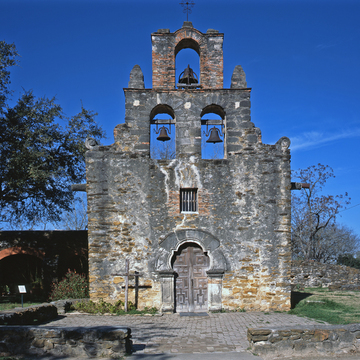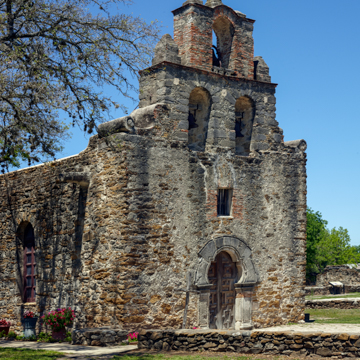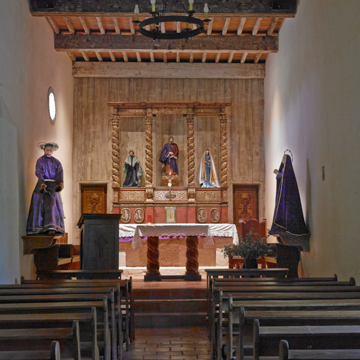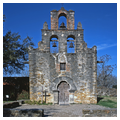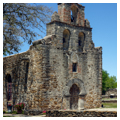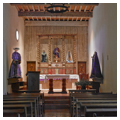Mission Espada is, like neighboring San Juan Capistrano (SA86), an incomplete complex.
Accounts from the eighteenth century state that the original church was demolished and that what today serves in its place was intended as a sacristy. Espada's principal feature is the remarkable horseshoe arch above the entrance, a survival of a Moorish motif on a Spanish colonial structure. The design of this arch and its construction have been the subject of numerous studies. The arch stones may have been removed from the original church doorway, which was wider, and rearranged to fit over this narrower door opening. Atop the facade is a two-tiered espadaña, similar to that seen at San Juan Capistrano. The plain interior contains a fine eighteenth-century painted wooden statue of St. Francis, the mission's patron saint, set in a wooden niche along the apse. In 1824 Friar Díaz reported that the wooden beam and mortar ceiling was in bad condition but it was not replaced until 1911 along with new doors and windows, roof, and brick floor.


